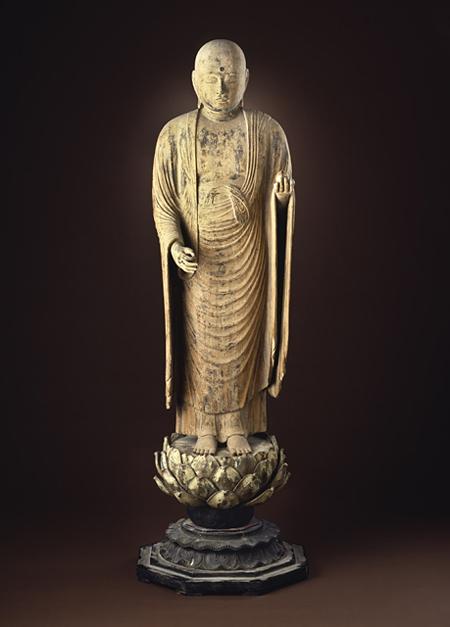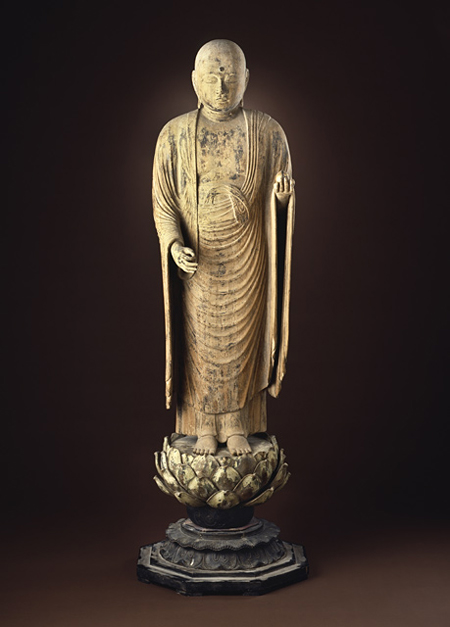Japan, Jizo Bosatsu, late Heian Period (c. 1070–1120), gift of Anna Bing Arnold
When I think about what my favorite object is in the collection, I have to reexamine what object continues to move me the most, or the object that I will go out of my way and see over and over again. My choice tends to come back to an object that has been in our collection for over thirty years—the Jizo Bosatsu (c. 1070–1120), a wooden sculpture of a Buddhist monk that has been quietly present within the Japanese Pavilion galleries.
Jizo is worshiped as the protector of children, mothers in childbirth, travelers, and others in distress. This object stands on a lotus base. The pure flower rises above murky waters, symbolizing release from the karmic wheel of rebirth. The golden, peach-shaped object that he holds in his right hand is a wish-granting jewel attesting to his transcendent power. In my opinion, no other object comes close to its simplistic beauty. Japanese aesthetics prides itself in embracing asymmetrical composition, yet the carving underneath his feet of the symbolic lotus blossom is perfect symmetry. Hints of paint still sit on top of the weathered wood. I find the draping around his robe poetic. I’ve encountered this object by looking down on its head, or looking upward toward its feet. Both views move the spirit in equally humbling ways and give the viewer a sense of calm.
Amy McFarland, Associate Director, Graphics




